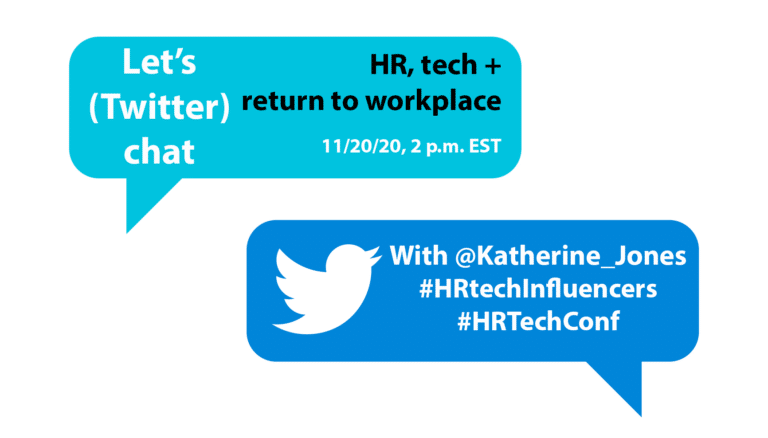The role of HR leaders has never been more important, as organizations struggle to keep up with near-daily changes to the world of work ushered in by the coronavirus pandemic and other global challenges. With such a tall order for HR, it’s beneficial to look to industry experts for their experience and guidance. Earlier this year, HRE and the HR Tech Conference unveiled the second edition of the Top 100 HR Tech Influencers, comprised of HR, business and technology leaders whose insights are needed now more than ever.
Related: Q&A with HR Tech Influencer Kelly Kauffman
HRE: What HR technologies and applications should vendors be working on right now? Why?
Martin: Skills-based analytics are needed to understand both the need for and availability of critical roles today (i.e. ICU nurses and hospital support staff) and in the future (i.e. as bots continue to take on some clerical roles such as in banking and customer service). We also need to be able to analyze skills proficiency levels to know when training and development are needed. We need to know where there are skill gaps when people leave the organization so that we can streamline hiring, looking for specific skill sets.
 HRE: How can HR leaders—and HR tech buyers—continue to focus on and invest in areas like D&I with business priorities so suddenly shifted?
HRE: How can HR leaders—and HR tech buyers—continue to focus on and invest in areas like D&I with business priorities so suddenly shifted?
Martin: With the confluence of COVID-19, the prevalence of remote work impacting productivity, the economic impact on women, and Black Lives Matter, we need to improve D&I more than ever.
- Organizations must hold themselves accountable to report on the diversity of their organization as a metric for their overall business health. In 2019, the ISO laid out 23 core metrics for reporting on human capital management, and in August 2020, the SEC adopted a new disclosure rule on how public companies manage their workforce. This New York Times article identifies numerous organizations that are publicly quantifying their goals for addressing racial equity. This public accountability increases the trust of the public and of employees in these brands.
- The key is to embed D&I into your organization’s DNA. When D&I is a critical component of your business strategy, and employees understand that it is good for the people and the business, your organization will be in a better position to drive and maintain support at all levels. Use data to identify unconscious bias in all employee life cycle processes from attracting new candidates to promoting and developing diverse workers to ensuring pay equity for diverse groups.
HRE: How will tech differentiate the companies that thrive after the pandemic from those that do not?
Martin: One key technology for adapting to the economy, to changing customer needs during COVID, and to the possible need for increasing or decreasing employees, is workforce planning—both operational workforce planning to focus on the next few months and strategic workforce planning to support three to five years or more out.
- An agile process that supports planning—whether it’s three months ahead or even one day ahead—requires having regular workforce planning conversations with business leaders, especially Finance. Technology that supports that conversation is invaluable.
- Resilient organizations need to develop workforce plans for multiple situations, whether it involves divestitures, splits, no growth, slow growth, medium growth, or rapid growth. Workforce planning that allows for multiple scenarios is also critical.
- The right workforce planning technologies and tools can enable teams to create and compare different workforce planning scenarios for either of the above (each with different workforce movement and cost assumptions) and to build multiple contingency plans.
